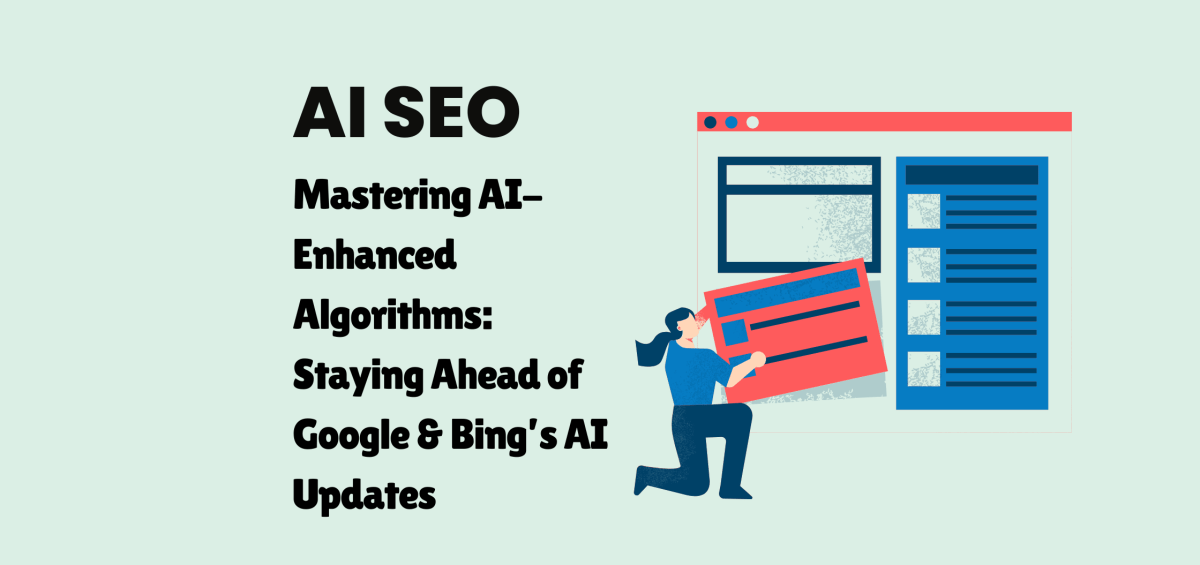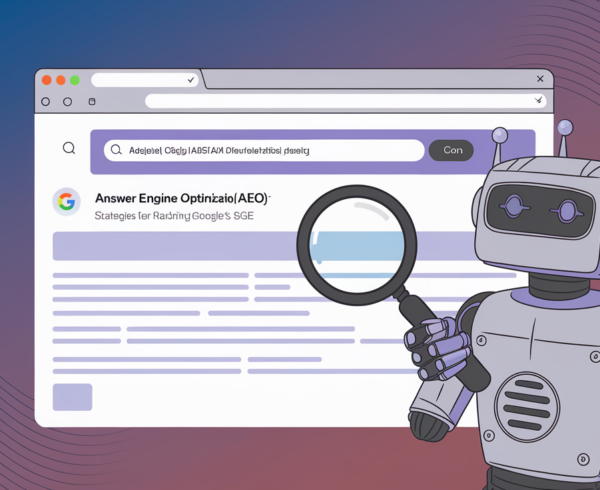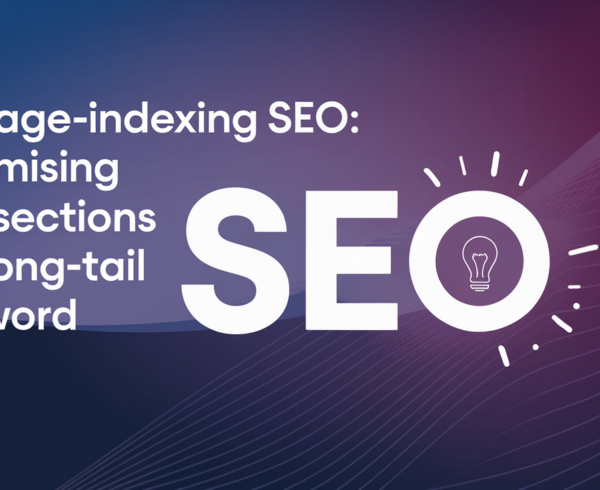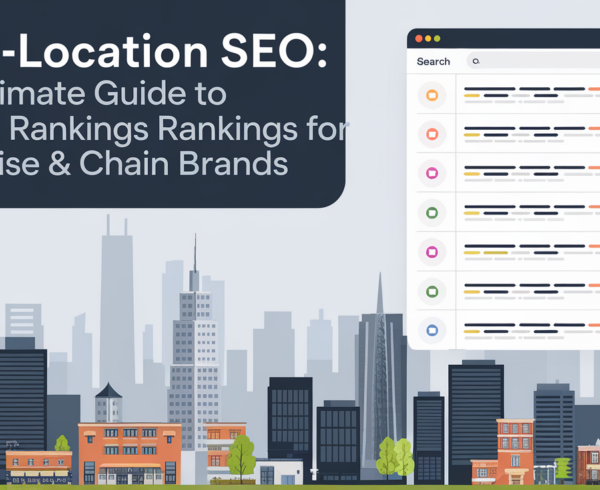Introduction
Search engines like Google and Bing have undergone a monumental shift in how they rank and serve content. Gone are the days when ranking algorithms relied solely on traditional factors like keyword usage and backlinks. Today, AI-driven algorithms are the backbone of how search engines understand user queries, rank content, and deliver results that best meet searcher intent.
With AI-powered algorithms like Google’s RankBrain, BERT, and MUM, and Bing’s AI integrations, search engines are becoming more intuitive, dynamic, and user-focused. As these algorithms evolve, businesses need to understand the nuances of AI’s influence on search to adapt and stay competitive.
In this article, we’ll explore how AI algorithms work, why they’re important for SEO, and how businesses can adapt their SEO strategies to stay ahead of these evolving AI-driven updates. We’ll provide practical strategies that senior marketers and business owners can use to future-proof their SEO and ensure long-term success in an AI-dominated search landscape.
How AI-Driven Search Algorithms Work
AI-powered search algorithms are revolutionizing how search engines process and interpret data. Unlike earlier algorithms that mainly relied on keyword matching, these AI systems are designed to understand the context behind search queries and deliver results that match user intent. Here’s a closer look at some of the most important AI systems driving these changes:
1. RankBrain: The First Step Toward AI in Search
Google’s RankBrain was one of the first major AI integrations into its search algorithm. Launched in 2015, RankBrain uses machine learning to help Google better understand ambiguous or complex search queries. Instead of simply matching keywords to indexed content, RankBrain can interpret context, allowing it to rank results more accurately based on the user’s intent.
RankBrain uses an algorithm that continuously learns from user interactions and search patterns. For example, if a user types a unique or complex query, RankBrain can infer the meaning based on the broader context of previous queries, even if it’s never encountered that exact query before.
Impact on SEO: RankBrain makes it even more crucial for businesses to optimize for contextual relevance and user intent, not just specific keywords. It also underscores the importance of crafting content that addresses both broad and specific searcher needs.
2. BERT: Understanding Natural Language
In 2019, Google introduced BERT (Bidirectional Encoder Representations from Transformers), a major update to how the algorithm processes language. While RankBrain focused on understanding search queries, BERT takes it a step further by using natural language processing (NLP) to comprehend the meaning of words within their full context. This allows Google to better understand conversational queries and deliver results that meet the nuances of the searcher’s intent.
For example, if someone searches for “can you get medicine for a cold at a pharmacy,” BERT helps Google understand that the user is likely looking for pharmacy locations, not just medicine or general health advice.
Impact on SEO: With BERT, SEO has become more focused on natural language and context. It’s important for businesses to ensure that their content is highly readable, written in a conversational tone, and focused on addressing user intent rather than relying on rigid keyword strategies.
3. MUM: The Multi-Tasker of Search Algorithms
The most recent and powerful addition to Google’s AI-powered search algorithms is MUM (Multitask Unified Model), which was announced in 2021. MUM is designed to understand and process information across multiple modalities, including text, images, video, and even audio. The goal of MUM is to provide a more holistic understanding of user queries and to generate richer, more contextually relevant results.
For example, MUM can interpret a complex search like “How can I travel to Paris and visit the Eiffel Tower on a budget?” and provide an answer that pulls from a wide variety of data sources, including cost estimates, travel tips, and images of the Eiffel Tower. It’s designed to answer questions with comprehensive, multi-dimensional information.
Impact on SEO: As MUM is still being rolled out, it’s clear that content depth and multi-format content will become increasingly important. Marketers will need to focus on creating rich content that covers multiple facets of a topic, including text, images, and other media. Furthermore, optimizing content for MUM means thinking beyond just keywords; it requires creating content that answers complex questions in a comprehensive, holistic manner.
Why These AI-Driven Updates Matter for SEO
As AI continues to integrate into search algorithms, businesses can no longer rely on traditional SEO practices alone. To stay competitive, marketers must rethink how they approach SEO by aligning their strategies with the evolving needs of AI-driven search engines. Here’s why it matters:
1. A Shift Toward User Intent and Context
AI-powered search engines like Google and Bing are becoming better at understanding the context of a query, not just the words typed into the search bar. This means businesses can no longer optimize solely for specific keywords. Instead, they must optimize for user intent—the reason behind the search—by providing content that directly answers the questions or needs the user is trying to fulfill.
For example, someone searching for “best restaurants in New York” is likely looking for recommendations. Someone searching for “how to make a reservation at a restaurant in New York” has a completely different intent. AI systems can distinguish between these nuances, which means content must be crafted to address specific searcher intent at every step of the buyer’s journey.
2. Emphasis on Content Quality and Relevance
AI systems reward high-quality, relevant content. With BERT and MUM, it’s not just about matching keywords with content—it’s about creating in-depth, authoritative, and trustworthy content. AI algorithms evaluate content quality and its ability to meet the user’s search intent.
Actionable Tip: Focus on producing high-quality content that answers specific questions and addresses user concerns. Content should be comprehensive, engaging, and informative, providing value to the user rather than just ticking off SEO checkboxes.
3. The Rise of Multi-Modal Search
As MUM demonstrates, the future of search is multi-modal. Visual content, videos, and other media are becoming integral to how search engines interpret and rank content. AI is also pushing for the inclusion of other content types—infographics, podcasts, and social media posts—to complement traditional written content.
For businesses, this means optimizing their content across multiple formats. It’s not enough to have just written articles; you need to integrate images, videos, and audio into your content strategy to remain competitive.
Actionable Tip: Expand your content offerings beyond blog posts and articles. Incorporate visual content (images, infographics, videos) and make sure it’s optimized with structured data (schema markup) to help AI-driven algorithms better understand it.
How to Stay Ahead of Google and Bing’s AI Updates
Search engines are evolving at an unprecedented pace, but businesses that stay proactive can thrive in this AI-driven era. Here are some actionable steps to adapt to AI-enhanced algorithms:
1. Optimize for Search Intent, Not Just Keywords
AI-driven algorithms like RankBrain, BERT, and MUM focus on search intent rather than just keywords. Businesses must create content that addresses specific user needs and answers common questions related to their products or services. Use long-tail keywords and natural language that match how people actually search.
2. Invest in Content Quality and Authority
With AI giving preference to high-quality, authoritative content, businesses must establish themselves as trusted sources in their industry. This means creating in-depth content that provides real value to users, sourcing information from credible references, and demonstrating expertise in your field.
3. Diversify Content Formats and Channels
AI algorithms favor multi-modal content. Incorporating videos, images, and other formats into your content strategy will help boost visibility and engagement. Don’t limit yourself to text-based content—use infographics, tutorial videos, and podcasts to create richer content experiences.
4. Stay Agile and Monitor Updates
As AI algorithms are constantly evolving, businesses must stay updated on changes and adjust their strategies accordingly. Monitor the impact of updates like RankBrain, BERT, and MUM on your rankings and traffic. Use tools like Google Search Console and SEMrush to track how your content is performing and adjust your strategy based on insights from AI algorithms.
Conclusion: The Future of Search is AI-Driven
AI-enhanced algorithms are changing the way search engines rank and serve content. Businesses that adapt to these changes will be well-positioned for success in an AI-driven search landscape. By focusing on user intent, content quality, and multi-modal content, businesses can stay ahead of the competition and continue to thrive as AI continues to reshape the future of search.As AI technologies like RankBrain, BERT, and MUM evolve, so too must your SEO strategy. Stay informed, stay agile, and always prioritize creating valuable content that serves both users and AI systems alike.






